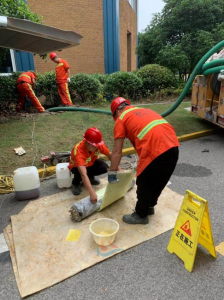Benefits of using local CIPP piping systems
When maintaining underground pipes and sewer systems, traditional methods often involve digging into the ground to access and repair damaged pipes. However, as technology advances, there are now more efficient and cost-effective solutions, such as cured-in-place piping (CIPP) systems. This innovative method repairs pipes without extensive excavation, making it ideal for local municipalities and businesses.
One of the main advantages of using a CIPP system is that it causes minimal disruption to surrounding areas. Unlike traditional pipe repair methods, CIPP eliminates the need to dig trenches and disrupt landscaping. This is particularly beneficial to local communities and businesses as it reduces the impact on traffic, pedestrians and nearby infrastructure. Using a CIPP system, the repair process can be completed with minimal disruption, providing a faster and more effective solution for pipeline maintenance.
Another benefit of using a local CIPP system is cost savings. Traditional pipe repair methods often require high labor and equipment costs, as well as the associated expenses of restoring the landscape once the repair is complete. In comparison, CIPP requires fewer resources and significantly reduces the need for excavation, thereby reducing the overall cost of the restoration project. For local municipalities and businesses with limited budgets, this can have a significant impact on their bottom line.
In addition, using a CIPP system can extend the service life of underground pipes and reduce the need for frequent maintenance and repairs. The epoxy resin used in the CIPP process creates a durable and long-lasting pipe lining that can withstand the rigors of underground environments. This reduces disruption to local communities and businesses and reduces expenditure on pipeline maintenance over time.
In addition, local CIPP systems can contribute to environmental benefits. By minimizing the need for excavation, CIPP helps preserve the natural landscape and reduce the carbon footprint associated with traditional pipe rehabilitation methods. Additionally, the long life of CIPP pipe liners allows for less frequent pipe replacements, resulting in less material waste and a more sustainable approach to infrastructure maintenance.
In summary, using a local CIPP system offers multiple advantages to municipalities and businesses in need of pipe rehabilitation. From minimal disruption to cost savings and environmental benefits, CIPP provides practical and efficient solutions for maintaining underground pipes. By considering the benefits of CIPP systems, local communities and businesses can make informed decisions about their infrastructure maintenance needs and invest in sustainable and effective pipe rehabilitation solutions.
